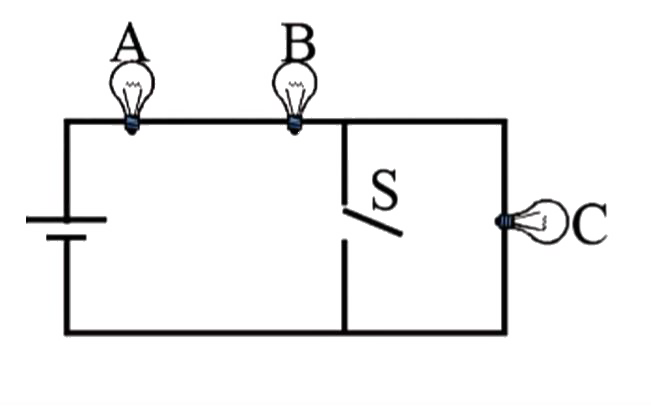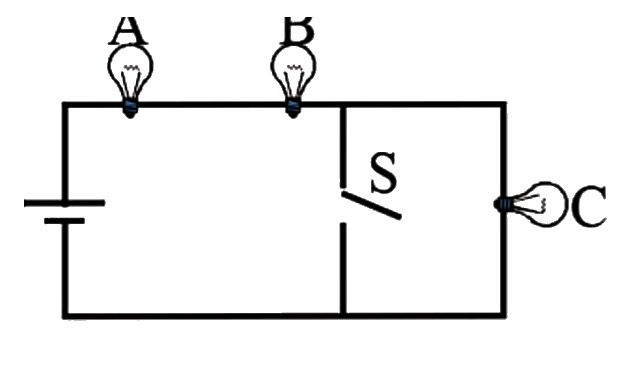Darkness : Lamp :: ?
Fatigue : Exercise
thirst : Water
Medicine : Illness
Study : Classroom
The correct Answer is:B
To solve the analogy "Darkness : Lamp :: ?," we need to identify the relationship between the first pair and apply the same relationship to find the missing pair.
1. Identify the Relationship in the Given Pair:
- The first term is "Darkness," and the second term is "Lamp."
- A lamp provides light, which eliminates darkness. Therefore, the relationship is that the second term (Lamp) eliminates the first term (Darkness).
2. Look for Similar Relationships in the Options:
- We need to find a pair where the second term eliminates the first term, just like the lamp eliminates darkness.
3. Evaluate the Options:
- Option A: Fatigue : Exercise
- Exercise can reduce fatigue, but it doesn't completely eliminate it. This does not fit our relationship.
- Option B: Thirst : Water
- Water quenches thirst. Here, water (the second term) eliminates thirst (the first term). This fits our relationship.
- Option C: Medicine : Illness
- Medicine can cure or alleviate illness, but it doesn't always eliminate it completely. This does not fit our relationship.
- Option D: Study : Classroom
- A classroom is a place for study, but it does not eliminate the concept of study. This does not fit our relationship.
4. Conclusion:
- The correct answer is Option B: Thirst : Water, as water eliminates thirst in the same way that a lamp eliminates darkness.
Final Answer:
Thirst : Water
- The first term is "Darkness," and the second term is "Lamp."
- A lamp provides light, which eliminates darkness. Therefore, the relationship is that the second term (Lamp) eliminates the first term (Darkness).
- We need to find a pair where the second term eliminates the first term, just like the lamp eliminates darkness.
- Option A: Fatigue : Exercise
- Exercise can reduce fatigue, but it doesn't completely eliminate it. This does not fit our relationship.
- Option B: Thirst : Water
- Water quenches thirst. Here, water (the second term) eliminates thirst (the first term). This fits our relationship.
- Option C: Medicine : Illness
- Medicine can cure or alleviate illness, but it doesn't always eliminate it completely. This does not fit our relationship.
- Option D: Study : Classroom
- A classroom is a place for study, but it does not eliminate the concept of study. This does not fit our relationship.
- The correct answer is Option B: Thirst : Water, as water eliminates thirst in the same way that a lamp eliminates darkness.
Thirst : Water
Topper's Solved these Questions
- BOOK - MCGROW HILL PUBLICATIONCHAPTER - ASSIGNMENT-3(ANALOGY)EXERCISE - TYPE 3 [Number Analogy]30videos
ASSIGNMENT-3(ANALOGY)
- BOOK - MCGROW HILL PUBLICATIONCHAPTER - ASSIGNMENT-3(ANALOGY)EXERCISE - TYPE 425videos
ASSIGNMENT-3(ANALOGY)
- BOOK - MCGROW HILL PUBLICATIONCHAPTER - ASSIGNMENT-3(ANALOGY)EXERCISE - TYPE 5 [Double Analogy]20videos
ASSIGNMENT-3(ANALOGY)
- BOOK - MCGROW HILL PUBLICATIONCHAPTER - ASSIGNMENT-10 (CLASSIFICATION)EXERCISE - TYPE-420videos
ASSIGNMENT-10 (CLASSIFICATION)
- BOOK - MCGROW HILL PUBLICATIONCHAPTER - ASSIGNMENT-7 (PUZZLE TEST)EXERCISE - MCQs20videos
ASSIGNMENT-7 (PUZZLE TEST)
Similar Questions
Knowledge Check
- Question 1 - Select One
Dark bands are
AA-bandBB-bandCI-bandDZ-line - Question 2 - Select One
In an electric circuit, potential difference across a lamp is 20 V and current through the lamp is 0.5A. The resistance of the lamp is
A10ΩB20ΩC30ΩD40Ω - Question 3 - Select One
Statements: 1. Some lamps are candles
2. No candle is bulb
Conclusions: 1. Some candles are lamps
2. No bulb is candleAonly conclusion 1 follows,Bonly conclusion 2 follows,Ceither conclusion 1 or 2 follows,Dboth conclusions 1 and 2 follow.
A circuit consists of three identical lamps connected to a battery as shown in figure. When the switch S is closed then the intensities of lamps A and B
 View Solution
View SolutionA circuit consists of three identical lamps connected to a battery as shown in the figure. When the switch S is closed then the intensities of lamps A and B
 View Solution
View SolutionDark band are
View SolutionIn given question below are two statements followed by two conclusions numbered I and II. You have to take the given two statements to be true even if they seen to be at variance from commonly know facts. Read the conclusions logically follows the two given statement, disregarding commonly know facts.
Give answer
(a) if only conclusion I follows,
(b) if only conclusion II follows,
(c) if either conclusion I or II follows,
(d) if neither conclusion I nor II follows,
(e) if both conclusion I and II follows.
Statements : All bags are cakes. All lamps are cakes.
Conclusions : I. Some lamps are bags.
II. No lamp is bag.View SolutionThe metal used in incandescent lamps is
View Solution


